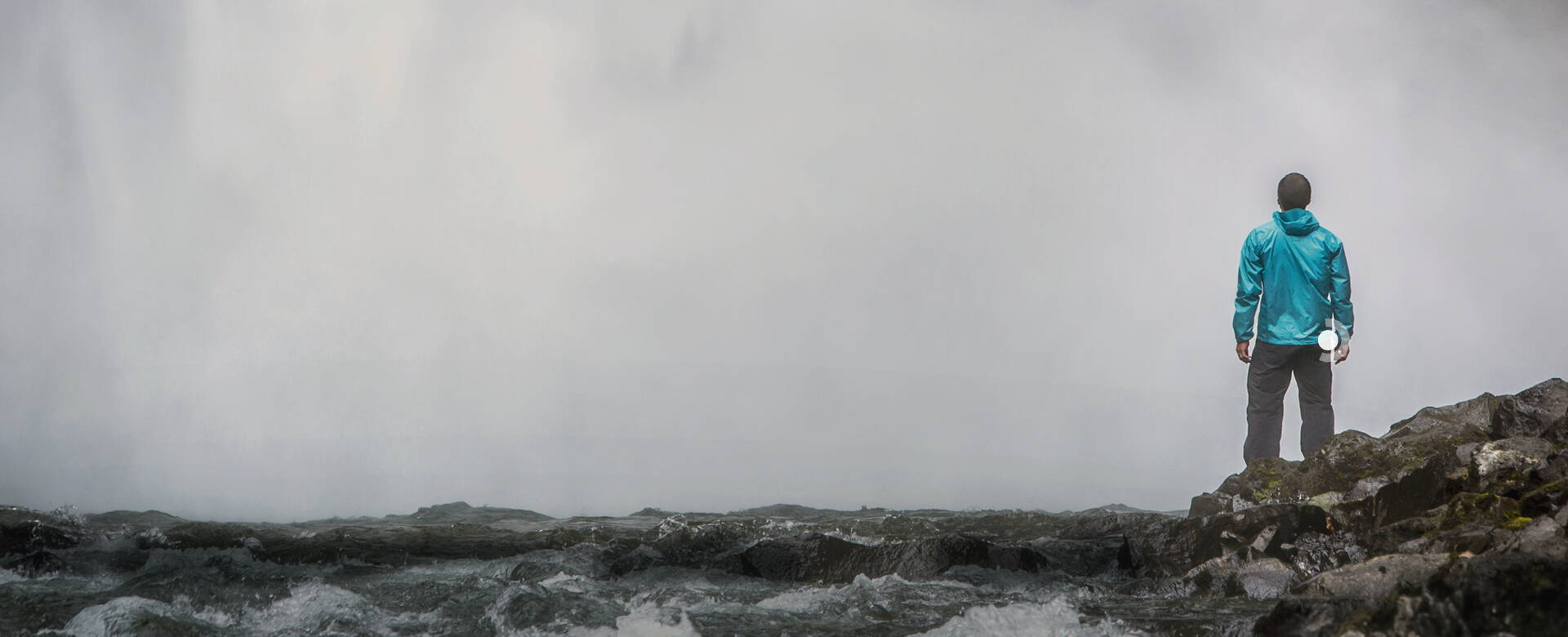Publication
Goldletter Edition 1/2018
Topic:
„Diverse Causes for an Unstable Shoulder Joint"
The shoulder joint is primarily stabilized by the muscles and the joint capsule. Other stabilizers include the cartilaginous lip at the edge of the shoulder socket (labrum), the negative pressure within the joint, and the bony shape. The shoulder socket is relatively small, and the head of the upper arm is large. This makes the shoulder joint the most mobile joint in the human body, but at the same time, it is prone to instability.
A trauma can injure the stabilizers. This is then referred to as traumatic shoulder instability. This usually results in a lesion (tear) of the anterior cartilaginous lip on the shoulder socket, known as a Bankart lesion. The anterior inferior shoulder capsule and the associated ligaments are often torn as well. However, the shoulder stabilizers can also be congenitally weak if the soft tissue of the capsular-ligamentous apparatus is too weak or too elastic. In such cases, minor injuries are sufficient to cause a shoulder dislocation. These atraumatic instabilities are usually congenital. The excessively elastic capsular-ligamentous tissue allows the head of the upper arm too much play in the shoulder socket, and even minor manipulations can cause a partial (subluxation) or complete dislocation (luxation).
Traumatic or Atraumatic
To plan a conservative or surgical therapy, the distinction between traumatic and atraumatic shoulder instabilities is essential. In most patients, a trauma is responsible for the shoulder dislocation; often an event that was so significant for the individual that they can still remember it years later. Depending on age and other factors, repeated dislocations are not uncommon. This is due to the stabilizers that were injured during the initial trauma, which usually cannot heal spontaneously. The torn shoulder socket rim and the capsular-ligamentous apparatus are injured, and sometimes a bony piece of the shoulder socket is also broken off. In rare cases, one encounters voluntary dislocations. Patients can then demonstrate the dislocation on command and independently relocate the arm. This is often done several times in a row.
Diagnosis and Treatment of Shoulder Instability
Initially, a conventional X-ray of the shoulder in several planes must be performed. In acute cases, the direction of any dislocation can be determined. Additionally, a fracture of the humeral head or socket can be ruled out. Subsequently, an ultrasound examination is necessary to assess the soft tissues (e.g., rotator cuff). In the case of recurrent (repeated) dislocations or persistent pain, a magnetic resonance imaging (MRI) scan is performed to visualize any possible injuries to the labrum, cartilage, or tendons. However, a clinical examination is always necessary beforehand to assess the degree and direction of instability.
Non-operative, Conservative Therapy
The primary treatment goal is a pain-free, mobile, stable, and load-bearing shoulder. In acute shoulder dislocation, immediate reduction (repositioning) is the primary goal. Beforehand, an X-ray is taken to rule out a fracture. If reduction cannot be achieved in the awake patient due to muscle tension, a short general anesthetic must be performed. After reduction, the shoulder is immobilized in a sling or with a sling for a few days and then treated with physiotherapy. Immediate surgery is not necessary in most cases. It is only indicated for fractures that cannot be treated conservatively and for patients who require an extremely resilient shoulder (e.g., professional athletes).
Chronic Shoulder Instabilities
With physiotherapy guidance and a targeted muscle-building program, surgery can possibly be avoided, and the damage to the labrum and capsular-ligamentous apparatus can be compensated for by strengthening the dynamic stabilizers (muscles). However, the injured structures do not heal. If symptoms persist despite conservative therapy, the only option left is stabilizing surgery. Patients who can voluntarily demonstrate dislocations should initially refrain from doing so permanently. The prognosis for spontaneous healing, even after many years, is good. Operations due to voluntary dislocations rarely lead to the desired success.
Surgical Therapy
The younger a patient is with a first-time dislocation (e.g., 18-30 years), the more likely surgical stabilization is recommended, as the probability of a recurrent dislocation is 90%. The older the patient is (over 50 years), the more likely a wait-and-see approach and conservative therapy is recommended, provided the tendon/muscle apparatus is intact. If the rotator cuff is also injured, surgery is necessary. A distinction is made between arthroscopic and open stabilization surgeries.
Arthroscopic Surgical Procedures
In arthroscopic shoulder stabilizations, an arthroscope camera and a surgical instrument are inserted through two to four small incisions, about 0.5 to 1 cm long. The arthroscopic surgery is usually performed in the side or supine position.
Bankart Procedure
In this arthroscopic procedure, the torn labrum is reattached to the bone and the overstretched capsular-ligamentous apparatus is tightened. Special suture anchors are used for this, which are fixed in the bone of the glenoid. In special cases, an additional remplissage is performed. In this procedure, the tendon of the infraspinatus muscle is sewn into the Hill-Sachs lesion at the posterior superior part of the humeral head.
Open Surgery
An open surgery is performed through a 5-7 cm long incision in the front of the shoulder. The open Bankart procedure is a classic method for fixing the torn labrum to the front of the glenoid using open suture anchors or bioresorbable screws. If there are larger bony injuries to the glenoid rim, these must be fixed with screws using the classic open technique. If the bony injury to the glenoid rim is too large or the detached bony fragment is too small for screwing or has already healed in a malposition, a method is chosen in which a block of bone must be transferred. For this, a block of bone can be taken from the iliac crest and inserted into the bony defect in the glenoid rim (J-Span) to restore the natural contour of the glenoid. Alternatively, the coracoid process can be detached and transferred with the attached biceps tendon as a static and dynamic stabilization. This technique is called open stabilization according to Latarjet. Long-term results of this procedure show up to 98% of very satisfied patients and a reluxation rate of a maximum of 3%.
Postoperative Care
Correct postoperative care is just as important as the actual surgery itself. After arthroscopic labral repair, the shoulder is immobilized in an orthosis for the first two weeks. The patient then wears a sling during the day for another two weeks. A rehabilitation program, accompanied by specially trained physiotherapists, begins on the first day after surgery. The shoulder joint is moved in a controlled and dosed manner to prevent adhesions of the gliding surfaces. The arm must not be externally rotated more than 0 degrees for the first six weeks. After this initial rehabilitation phase, a continuous increase in movement and load with muscular stabilization exercises under the guidance of a physiotherapist follows. Lighter physical and sporting activities are already possible at this time. Contact sports such as handball, football, martial arts, etc. can be resumed after six to nine months. Rehabilitation after a Latarjet operation is faster and easier.
High Patient Satisfaction
After stabilizing surgeries (arthroscopic or open), most patients are very satisfied. Depending on the scientific study, the degree of satisfaction is between 80 and 100 percent. The risk of a recurrent dislocation is about 8 percent.
In a Nutshell: Why Stabilize Surgically?
Repeated dislocations can lead to significant pain and discomfort.
Risk of Nerve Damage: Each dislocation carries the risk of the axillary nerve becoming trapped or damaged during the dislocation event or the reduction maneuver. This can result in paralysis and/or sensory disturbances.
Increased Risk of Arthritis: Every dislocation can lead to more structural damage to the cartilage, labrum, capsule, glenoid rim bone, and humeral head. Early arthritis would be the consequence.







